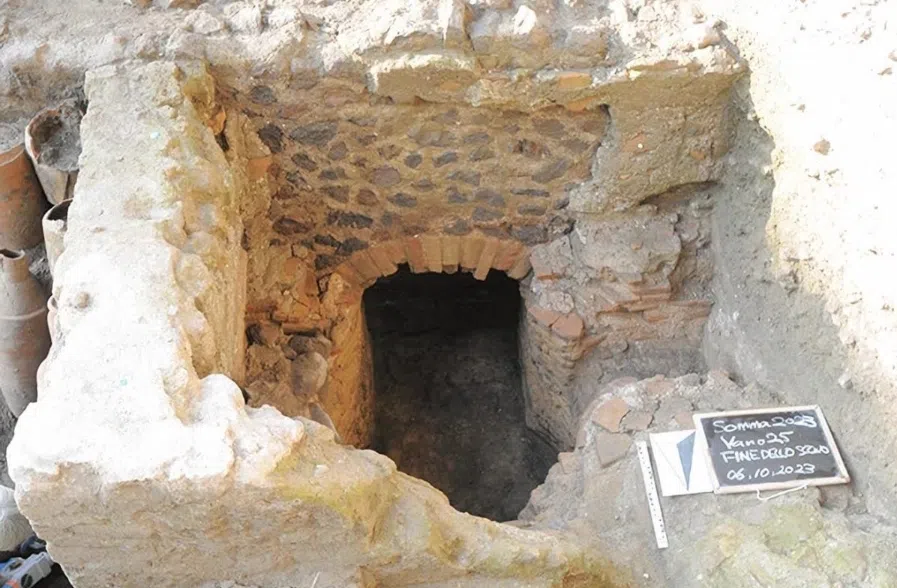
A nearly 2,000-year-old building has been discovered in Southern Italy at a site with ancient Roman ruins buried in volcanic ash. The research team posits it may have been a villa owned by Roman Emperor Augustus (63 BC-14 AD). Augustus was the first emperor of Rome.
The team of researchers from the University of Tokyo, led by Mariko Muramatsu, a professor of Italian studies, began excavating the Somma Vesuviana ruins on the northern side of Mount Vesuvius in the Campania Region in 2002.
Researchers from the University of Tokyo have unearthed an ancient villa from beneath volcanic ash that they believe may have been used by the first Roman emperor, Augustus
Discovered April 17 Somma Vesuviana https://t.co/BBpcHo9YYt pic.twitter.com/T15kZ03PUz
— Sarah (@Sarah404BC) April 19, 2024
As recorded in accounts from antiquity, Augustus died at his villa northeast of Mount Vesuvius, and a memorial was erected there afterwards in memory of his accomplishments. However, the precise location of that villa remained a mystery.
The research team has uncovered part of a structure that was thought to be used as a warehouse. One wall of the building contains lots of amphora ceramic containers organized in rows.
On top of this, they found the ruins of what was likely a furnace that was used to heat the bath. A section of the wall had collapsed, scattering ancient roof tiles along the floor.

Carbon dating of material taken from the furnace showed that most samples were from around the first century. Researchers hold that no material was dated back to the subsequent period, and they believe the kiln was no longer in use at this point.
What was the villa like?
Experts also claim there is a possibility the building was Roman Emperor Augustus’ villa, as it had a private bath—a luxury which was typically only bestowed upon influential figures of the time. In addition, they said the bath was out of use around the same time that Augustus died, and what appeared to be a large temple was later built on the site.
The volcanic material covering the ruins was found to have originated from the pyroclastic flow of lava, rocks, and hot gases which spewed from Mount Vesuvius in 79 AD, according to a chemical composition analysis conducted by the researchers. Pompeii on the mountain’s southern slope was destroyed by that same eruption.

“We have finally reached this stage after 20 years,” said Masanori Aoyagi, professor emeritus of Western classical archaeology at the University of Tokyo, who originally led the research team that started excavating the site in 2002. “This is a major development that will help us determine the damage caused to the northern side of Vesuvius and get a better overall idea of the eruption in 79.”
Who was Augustus, the first Roman emperor?
Augustus, also known as Octavian, was the founder of the Roman Empire. He ruled as the first Roman Emperor from 27 BC until his death in 14 AD. The reign of Augustus began an imperial cult, as well as an era associated with imperial peace (Pax Romana) during which the Roman world was largely free of armed conflict.
See all the latest news from Greece and the world at Greekreporter.com. Contact our newsroom to report an update or send your story, photos and videos. Follow GR on Google News and subscribe here to our daily email!



